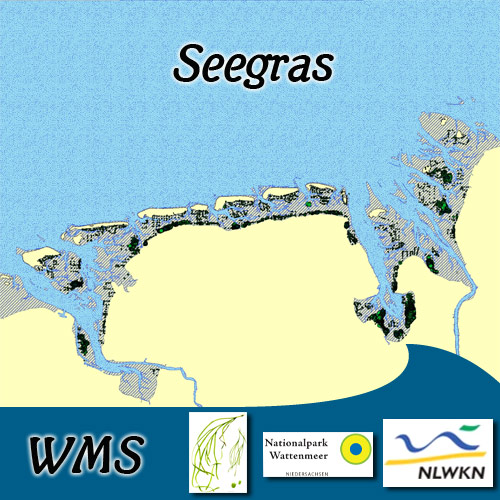Seagrass
Type of resources
Topics
Keywords
Contact for the resource
Provided by
Years
Formats
Representation types
Update frequencies
status
Service types
-
Sexual reproduction is critical to the resilience of seagrass beds impacted by habitat degradation or environmental changes, as robust seed banks allow new shoots to establish each year. Reproductive strategies of seagrass beds range on a continuum from strictly annual to perennial, driven by local environmental conditions. We examined the reproductive dynamics of Zostera marina beds at six sites on the Atlantic coast of Canada to characterize how life history strategies are shaped by the surrounding environment. Sites were categorized as wave protected and wave exposed, where protected sites were warm, shallow, with little water movement and muddy sediments, and exposed sites were either shallow or deep, with cooler water and sandy sediments. While mixed life history strategies were evident at all sites, protected eelgrass beds exhibited both the highest and lowest sexual reproductive effort relative to exposed beds. These beds regularly experienced thermal stress, with higher temperature range and extended warm water events relative to exposed beds. The development of reproductive shoots were similar across sites with comparable Growing Degree-days at the beginning and end of anthesis, but the First Flowering Date was earlier at the protected warmer sites relative to exposed sites. With different reproductive shoot density among sites, seed production, seed retention, and seedling recruitment also varied strongly. Only one site, located in a warm, shallow and protected lagoon, contained a mixed life history population with a high reproductive effort (33.7%), strong seed bank, and high seedling establishment. However, a primarily perennial population with the lowest reproductive effort (0.5%) was identified at the warmest site, suggesting that conditions here could not support high sexual reproduction. Robustness of seed banks was strongly linked to reproductive shoot density, although the role of seed retention, germination and seedling survival require further investigation. Our study provides insights into one key aspect of seagrass resilience, and suggests that resilience assessments should include reproductive shoot density to inform their management and conservation. Cite this data: Vercaemer B. and Wong M. Reproductive ecology of Zostera marina L. (eelgrass) across varying environmental conditions. Published: May 2022. Coastal Ecosystems Science Division, Fisheries and Oceans Canada, Dartmouth, N.S. https://open.canada.ca/data/en/dataset/56cfea6f-aeca-47ed-94ab-c519d9e63c91
-
A global decline in seagrass populations has led to renewed calls for their conservation as important providers of biogenic and foraging habitat, shoreline stabilization, and carbon storage. Eelgrass (Zostera marina) occupies the largest geographic range among seagrass species spanning a commensurately broad spectrum of environmental conditions. In Canada, eelgrass is managed as a single phylogroup despite occurring across three oceans and a range of ocean temperatures and salinity gradients. Previous research has focused on applying relatively few markers to reveal population structure of eelgrass, whereas a whole genome approach is warranted to investigate cryptic structure among populations inhabiting different ocean basins and localized environmental conditions. We used a pooled whole-genome re-sequencing approach to characterize population structure, gene flow, and environmental associations of 23 eelgrass populations ranging from the Northeast United States, to Atlantic, subarctic, and Pacific Canada. We identified over 500,000 SNPs, which when mapped to a chromosome-level genome assembly revealed six broad clades of eelgrass across the study area, with pairwise FST ranging from 0 among neighbouring populations to 0.54 between Pacific and Atlantic coasts. Genetic diversity was highest in the Pacific and lowest in the subarctic, consistent with colonization of the Arctic and Atlantic oceans from the Pacific less than 300 kya. Using redundancy analyses and two climate change projection scenarios, we found that subarctic populations are predicted to be more vulnerable to climate change through genomic offset predictions. Conservation planning in Canada should thus ensure that representative populations from each identified clade are included within a national network so that latent genetic diversity is protected, and gene flow is maintained. Northern populations, in particular, may require additional mitigation measures given their potential susceptibility to a rapidly changing climate. Cite this data as: Jeffery, Nicholas et al. (2024). Data from: Variation in genomic vulnerability to climate change across temperate populations of eelgrass (Zostera marina) [Dataset]. Dryad. https://doi.org/10.5061/dryad.xpnvx0kp2
-

Seegras:2003. Durch Übersichtsbefliegungen und Begehungen wurden in 2001-2003 die Seegrasbestände im Eulitoral erfasst. Die Daten sind Bestandteil des Trilateral Monitoring and Assessment Program (TMAP). Seegras:2008. Durch Begehungen wurden in 2008 die Seegrasbestände im Eulitoral erfasst. Seagrass:2003. The eulittoral Seagrass stocks were mapped by aerial flight and field survey in 2001-2003. The data are part of the Trilateral Monitoring and Assessment Program (TMAP). Seagrass:2008. The eulittoral Seagrass stocks were mapped by field surveys in 2008.
 Arctic SDI catalogue
Arctic SDI catalogue